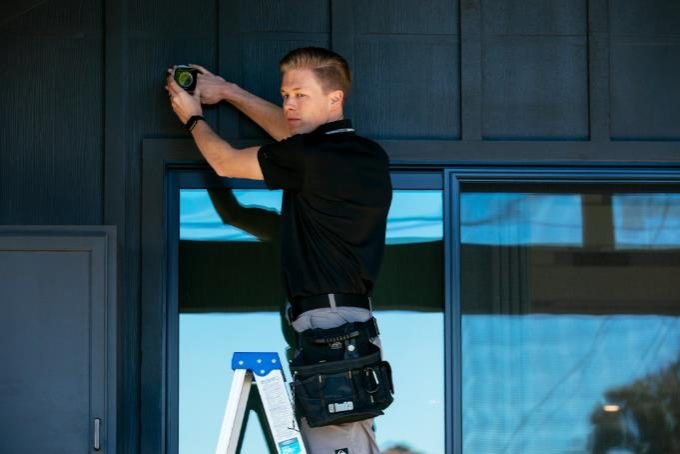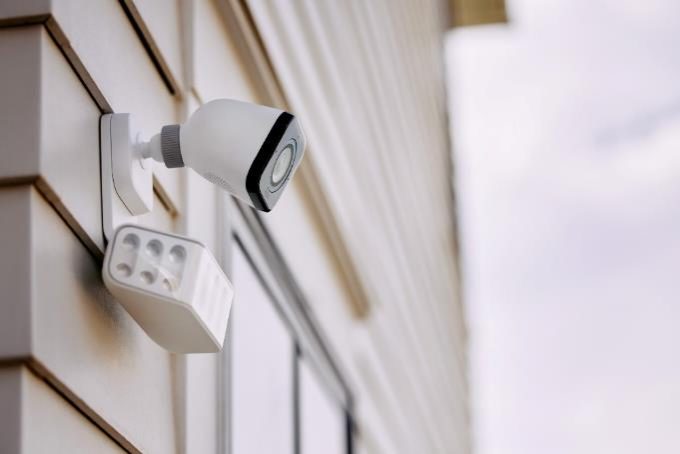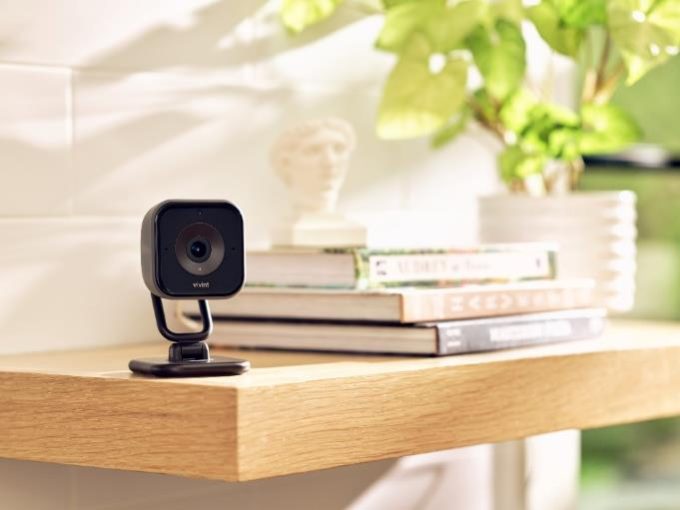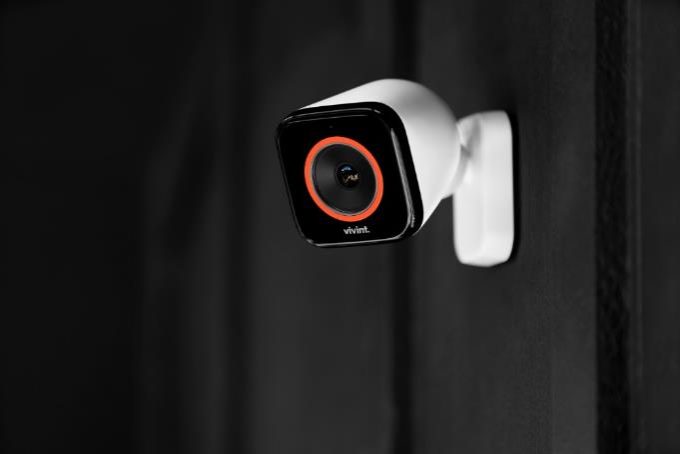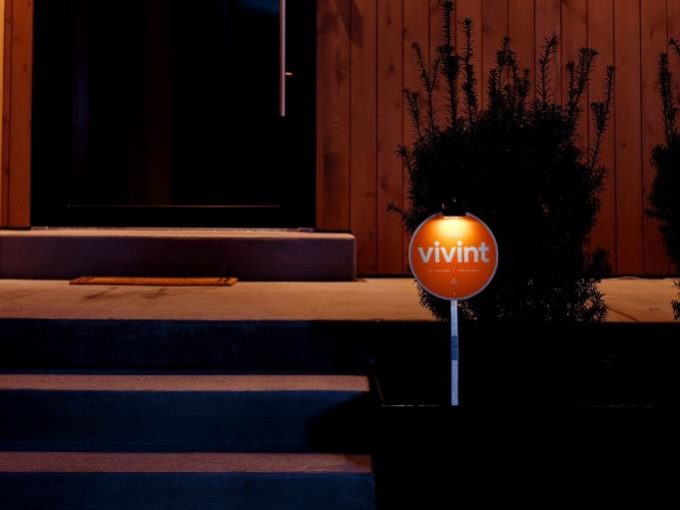The Ultimate Security Camera Buying Guide, Welcome to the new era of home security. Gone are the days when security cameras were a luxury for the rich and famous. Today, they are a crucial, accessible addition to safeguarding any modern home, as things can go awry in the blink of an eye. In this age of smart technology, home security cameras have evolved to offer high-tech features at a price point that won’t break the bank.
With many choices flooding the market, making the right decision can be overwhelming. Fear not! Our comprehensive guide is here to walk you through the maze of options. From understanding key features to identifying the perfect fit for your home, we’ve got you covered. Let’s discover how to find the ideal security camera to safeguard your home in our tech-driven world.
Different types of security cameras
Today, security cameras are not just devices; they are smart solutions tailored to different environments. Let’s explore the varieties available and find the perfect fit for your needs.
Indoor security cameras
Indoor security cameras are made to focus on the interior of your home. Indoor cameras have a wide range of features, from basic, no-frills surveillance cameras to more detailed, higher-end cameras with advanced capabilities. Some of these features include:
Specialized options include:
Many indoor home security cameras have enough features to be used interchangeably, so your camera can double as a nanny cam or pet monitor.
Indoor cameras can help you keep an eye on your home from anywhere.
The Ultimate Security Camera Buying Guide
Outdoor security cameras
Outdoor security cameras tend to be pricier than indoor security cameras, mostly because of the weather-resistant materials needed to withstand the elements and fluctuating temperatures.
Just like indoor security cameras, exterior security cameras have a wide range of features, depending on your needs and budget. These include:
Types of weatherproof outdoor cameras:
Both indoor and outdoor cameras offer a fusion of security and convenience, ensuring peace of mind in our fast-paced, connected world.
Don’t miss anything that happens on your property with the Vivint Outdoor Camera Pro.
Security camera designs
In the world of security camera design, form meets function in exciting ways. Today’s cameras are more than just tools; they are sleek, smart, and adaptable to a variety of settings. Let’s check out the various designs that cater to different needs, from discreet monitoring to expansive coverage.
Ultimately, the design of your camera will depend on the area you’re monitoring, whether or not you want a visible or discrete camera, and whether you are monitoring a home or commercial property.
Security camera power sources and connectivity
Your security camera’s power source will be an important consideration when choosing a camera. Your power source will influence where you place your cameras and whether you will need professional installation or additional wiring.
Wired vs. wireless—which is best?
Power sources are key players in the world of security cameras. Let’s review wired and wireless options, examining how wiring, battery life, and connectivity shape your security camera experience.
The decision between wired and wireless often boils down to your specific needs. If you prioritize stability and have a fixed spot in mind, wired options, either hard-wired or plug-in, are dependable choices. For those valuing flexibility and ease of installation, a wireless solar-powered or battery-operated camera (possibly with WiFi-enabled features) could be the perfect fit. Each type brings its unique blend of convenience, reliability, and tech-savviness to the table.
As you’re looking at security cameras, consider the differences between wired and wireless options.
Connectivity
In the digital age, how your home security camera connects and manages footage is crucial. Let’s explore the two primary connectivity options available for today’s security cameras: WiFi (IP) and Analog.
WiFi Security Cameras (IP)
Today’s home security cameras are predominantly WiFi-enabled, offering seamless integration with your home’s WiFi network. This IP camera setup allows for an incredibly user-friendly experience. You can access your camera, view live footage, and receive timely notifications, all through a handy app on your smartphone. This connectivity provides unparalleled convenience and flexibility, ensuring you’re always in the loop, no matter where you are.
The key here is to ensure your home WiFi network has sufficient bandwidth to support these IP cameras. When it comes to video storage, you have options. Cloud storage is increasingly popular, allowing you to access video recording footage from anywhere. Alternatively, you can store the footage locally on your device.
Analog Security Cameras
Analog cameras, the traditional choice, operate independently from the internet. They record footage onto a micro-SD card or a hard drive, which you can then view on a computer. While they lack WiFi cameras’ real-time streaming and notifications features, they have their advantages. In areas with unreliable or no WiFi coverage, analog cameras offer a robust solution. They’re also common in specific applications like vehicle dashboard security.
Traditional analog CCTV cameras use coaxial cables to transmit video, with HD over coax options available for high-definition footage without relying on a WiFi network.
In summary, most modern homes opt for WiFi network-based cameras with cloud storage for their surveillance needs. These IP cameras are widely accessible and budget-friendly and leverage your existing home internet setup for optimal convenience and security.
How to choose a security camera
Selecting the best security camera for your home and family is a big decision. Here’s a guide to help you navigate the options and find the perfect fit for your needs.
1. Decide how you’ll be using the camera.
Understanding the primary function of your camera is essential. For indoor use, consider if you need to monitor children or specific areas. Outdoors, decide if you need a visual deterrent or a specialized camera for areas like your front porch.
2. Choose your camera type.
Based on your needs, select the camera type. This could range from an indoor security camera with two-way speakers to a doorbell camera for package protection to an outdoor camera with wide-angle viewing for broader coverage.
3. Pick your power source.
Like a baby monitor, a wireless camera offers flexibility for indoor use. For high-placed outdoor cameras, a hard-wired option could be more practical to avoid frequent battery changes.
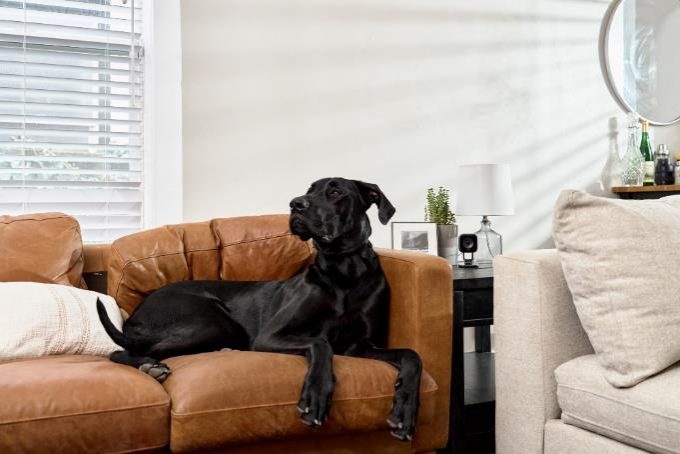 Another important consideration is the power source for your cameras.
Another important consideration is the power source for your cameras.
4. Compare cloud storage plans.
Cloud storage capacity is key for accessing saved footage. Your storage plan should match the number and type of cameras you have. For instance, a single doorbell camera requires less space than multiple outdoor and indoor cameras.
5. Consider your privacy.
Ensure your camera has robust security features like strong data encryption to prevent hacks. Opt for reputable brands that specialize in smart home security systems.
6. Know your must-have features.
Determine essential features like two-way talk microphones for indoor cameras or proactive protection for doorbell cameras. This helps in filtering your choices.
7. Set a budget.
Security camera prices vary widely. You can find high-quality options at an affordable price with features like color night vision, motion detection, HD video, and spotlight cams. If considering a complete security camera system, consider buying incrementally or explore no-interest financing options.
In your search for the best security camera, consider smart features like spotlight cameras for enhanced outdoor security or cameras with color night vision for clearer nighttime footage. Remember, the ideal camera balances high-quality features with your specific security needs and budget.
In the era of smart homes, integrating a security system with cameras is about safety, peace of mind, and embracing modern technology. Here’s what to consider when exploring smart home security systems.
Monitoring
How do you plan to monitor your recorded video footage? Here are two options to consider:
With a Vivint smart security system, your home will be monitored around the clock.
Recording and storage
These are the two main ways that security cameras record videos:
For video storage, you can choose between cloud and local storage. Local storage, like a microSD card, offers security and no ongoing costs, while cloud storage provides ease of access and more space for your HD video recordings.
Smart home integration
A smart home security system isn’t just about surveillance; it’s also about seamless integration. With a smart home app, you can control everything from live footage viewing to arming your system, all from your smartphone. These systems often feature HDR for clearer images and support new products as your smart home ecosystem grows.
Control your home from anywhere with the Vivint app, no matter where you are.
Installation
Whether you choose a DIY approach or professional installation, finding a security camera system that aligns with your lifestyle is essential. From DVRs and NVRs for robust recording to smart home apps for on-the-go control, there’s a solution to fit every home. Embrace the blend of technology and security for a safer, smarter living space.
Key takeaway—it pays to research
Ultimately, choosing the right security cameras for your home will require some research. Your needs, wants, and budget will all play a role in the camera you choose. Taking the time to evaluate what you really need will help you choose a camera that will bring you and your family complete peace of mind.
Complete security camera guide, Security camera overview, Guide to buying security cameras, Security camera features explained, Types of security cameras, Security camera pros and cons, Technical specs for security cameras, How to set up a security camera, Popular security camera brands, Tips for choosing a security camera, Security camera options for businesses, Wireless vs. wired security cameras, Choosing the best security camera, Security cameras with night vision, Smart security cameras for home, Security camera resolution options, Integrating security cameras with smart homes, Privacy with security camera usage, Understanding security camera storage, Security camera recommendations for homeowners
